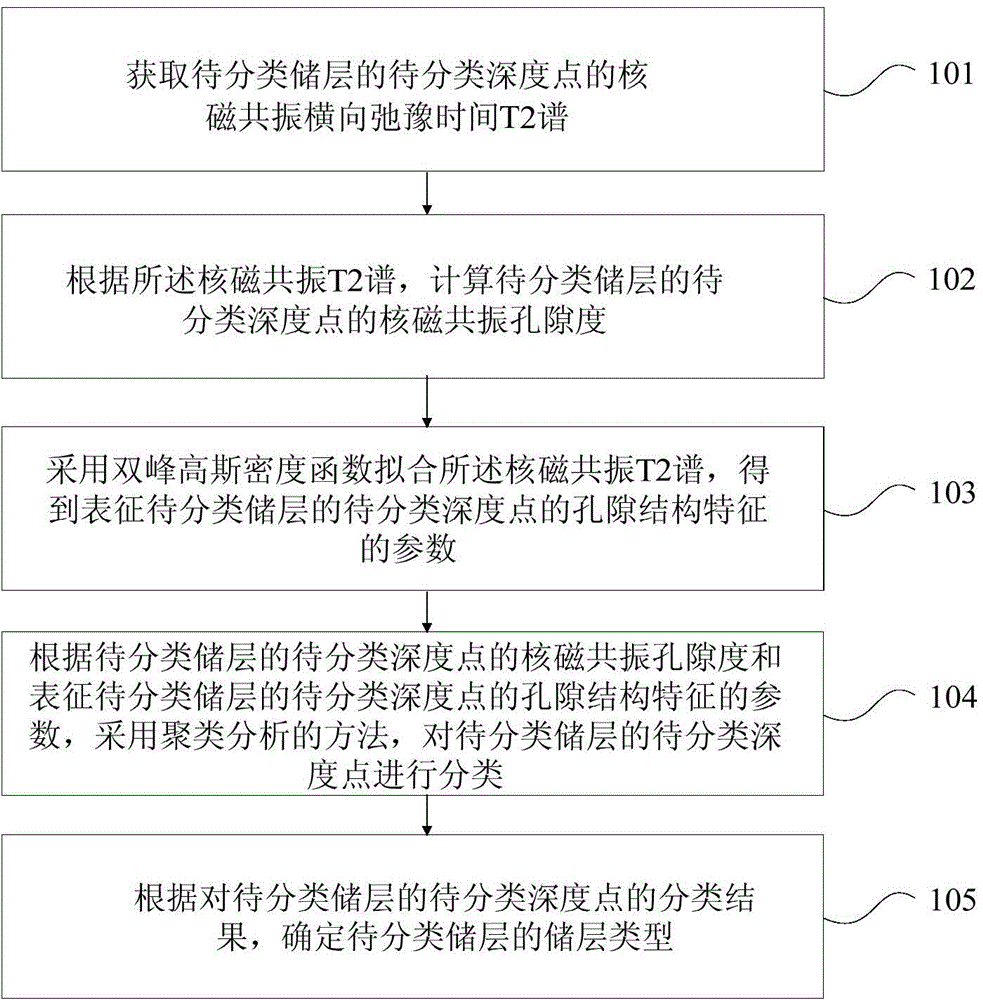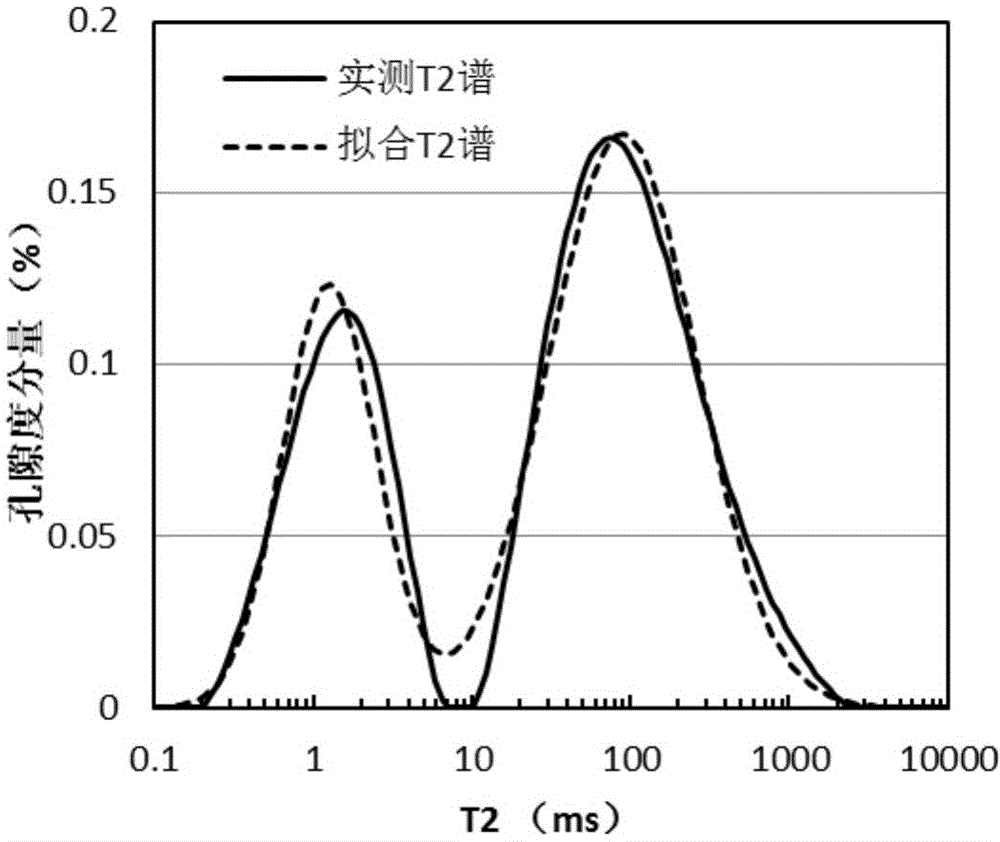Reservoir classification method based on nuclear magnetic resonance logging
A nuclear magnetic resonance and classification method technology, which is applied in the direction of electric/magnetic exploration, measurement device, sound wave re-radiation, etc. , Unable to build conversion model, etc.
- Summary
- Abstract
- Description
- Claims
- Application Information
AI Technical Summary
Problems solved by technology
Method used
Image
Examples
Embodiment Construction
[0044] In order to make the object, technical solution and advantages of the present invention clearer, the present invention will be described in further detail below in conjunction with the embodiments and accompanying drawings. Here, the exemplary embodiments and descriptions of the present invention are used to explain the present invention, but not to limit the present invention.
[0045] Bimodal Gaussian density function can be used to characterize rock pore structure characteristics. The invention utilizes bimodal Gaussian density function to fit nuclear magnetic resonance T2 spectrum, obtains six parameters characterizing reservoir pore structure characteristics, combines nuclear magnetic resonance porosity, and uses K-means clustering to classify reservoirs. Detailed description will be given below.
[0046] figure 1 It is a schematic flow chart of the reservoir classification method based on nuclear magnetic resonance logging in the embodiment of the present invent...
PUM
 Login to View More
Login to View More Abstract
Description
Claims
Application Information
 Login to View More
Login to View More - R&D
- Intellectual Property
- Life Sciences
- Materials
- Tech Scout
- Unparalleled Data Quality
- Higher Quality Content
- 60% Fewer Hallucinations
Browse by: Latest US Patents, China's latest patents, Technical Efficacy Thesaurus, Application Domain, Technology Topic, Popular Technical Reports.
© 2025 PatSnap. All rights reserved.Legal|Privacy policy|Modern Slavery Act Transparency Statement|Sitemap|About US| Contact US: help@patsnap.com



